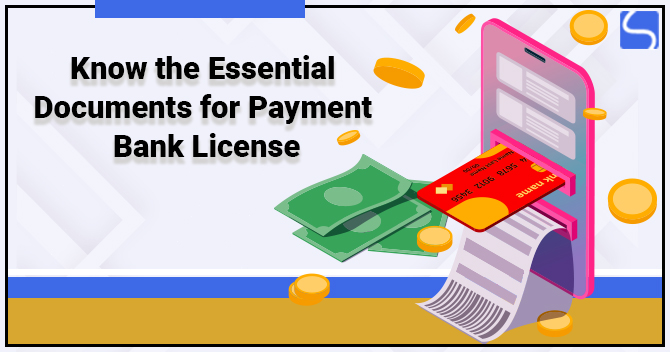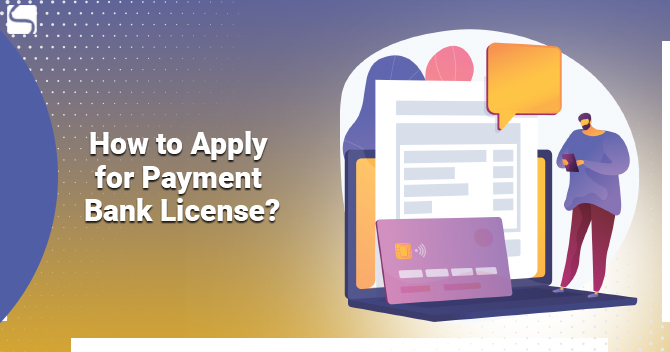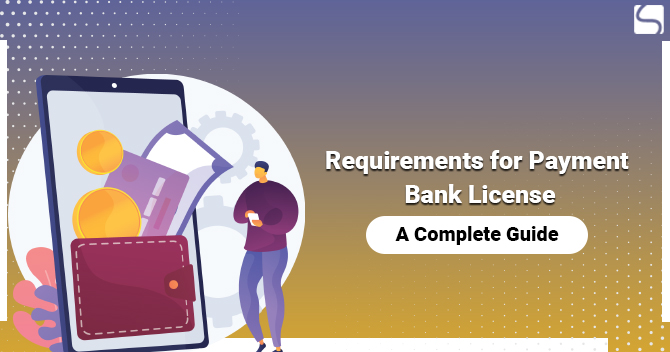Know the Essential Documents for Payment Bank License

Karan Singh | Updated: Jul 15, 2021 | Category: Payment Bank License
Payment bank is a new type of financial institution which is analysed and examined by the Reserve Bank of India. These banks are allowed to accept a deposit amount of Rs. 1 lakh per client. These financial institutions do not hold the right to issue loans or credit cards. But, they are permitted to issue debit or ATM cards and provide mobile banking. A payment bank makes banking life better due to the ease & flexibility they provide. Scroll down to check the vital documents for Payment Bank License in India.
Table of Contents
Who can Execute Business Activities Concerning Payment Bank?
The primary objective of these payment banks is to widen the access of bank-related services to needy people, low-income households, and small scale enterprises in a safeguarded technology-driven environment. The Reserve Bank of India seeks to deliver flawless financial services to all the nation’s remote areas by underpinning payment banks.
It intends to change the present economy by registering payment gateway for all kinds of transactions. These are the companies that can execute business activities concerning the Payment Bank. And you can check the same below:
- Non-Banking Financial Companies (NBFCs);
- Supermarket Chains;
- PPI (Prepaid Payment Instrument) issuers approved working under the PSS Act, 2007;
- Companies involved in the Telecom Sector;
- Real sector co-operatives owned & regulated by Public Sector Companies.
Crucial Documents for Payment Bank License
Following are the vital documents for Payment Bank License regarding individual promoters, members in the promoter group and company encouraging the bank and companies.
Information & Documents for Payment Bank License of the Individual Promoter
- Name, date of birth, address, PAN Number, branch detail, name of the guardian, bank details (such as IFSC Code and Account Number), and credit facilities of the promoter;
- Complete details concerning the experience & working background of the individual promoter, the track record and financial standing of the company, information regarding the interest of promoters in different companies, etc.
Detail and Documentation of the Company Encouraging the Bank
- Submit AOA (Articles of Association) and MOA (Memorandum of Association) of the company;
- The financial statement of the company for the last five years comprising the necessary economic indicators;
- Shareholding pattern of the company;
- ITR (Income Tax Return) for the past three years.
Details and documents for Payment Bank License of the companies & members in the Promoter Group
- PAN and TAN number;
- CIN (Corporate Identification Number);
- Names of the companies and individuals, management & corporate structure of all the companies, shareholding details, a symbolic representation of the organisation structure, total assets, and shareholding of the entities possess;
- Date of Registration;
- Bank Account Number;
- Branch detail of the companies and account information;
- List all the activities executed by the company;
- Name of all the companies and individuals in the promoted group;
- Address concerning the registered office;
- Tax liabilities faced by the company;
- Annual reports of the previous five years of the group entities;
- Companies and members’ name and corporate structure of all the entities, details of shareholding;
- All the companies’ stock listing detail.
Once you arrange all the documents for Payment Bank License, the candidate requires filing an application for a Payment Bank License to the Chief General Manager of Reserve Bank of India[1] concerning the issuance of the license. The External Advisory Committee shall inspect the application.
At the time of the examination process of the Payment Bank application, the committee may ask the candidate to confirm the authenticity of documents or details. Once the verification is done successfully, the Reserve Bank of India shall give the Payment Bank License to the candidate. The verified candidate shall be shown on the official website of the Reserve Bank of India.
Primary Characteristics of the Payment Banks
Traditional and Payment banks are almost similar on different factors, yet Payment Banks work under certain limitations like:
- Payment banks permitted to accept a deposit of one lakh rupees. Always remember that this is the maximum threshold limit for these banks;
- Payments do not have the permission to accept deposits from the people residing in a foreign location;
- Payment banks are accountable to invest a minimum of 75% of its demand deposit in security bill or Government funds with a maturity time of one year and possess a maximum of 25% in current & fixed deposits with other banks for functioning banks;
- Like conventional banks, Payment banks also need to get a fund in the form of CRR or Cash Reserve Ration with RBI;
- Payment banks permit clients to pay the latest utility bills like water and electricity bills via a protected Payment Gateway;
- Such banks are accountable to add the word “Payment Bank” in their name as it is a legitimate necessity;
- Such banks are officially entitled to accept remittances from many banks through payment mechanisms like NEFT/RTGS/IMPS;
- Such banks permit clients to open both current and saving accounts;
- Such banks shall reserve the right to make a payment on a personal basis & get remittances from the foreign location on the current accounts;
- Payment banks are permitted to issue debit cards but can’t issue a credit card;
- Payment banks cannot provide a credit facility to the clients;
- Divergence of such banks cannot be possible that is they have steak around with one branch to execute their activities;
- Payments banks can offer services concerning the internet and mobile banking;
- Such banks can signify any banks but under the severe guidelines of RBI;
- These banks under RBI Registration can operate as a partner with other conventional banks and provide mutual funds, pension and insurance products.
Conclusion
Payment banks are analysed and regulated by the Reserve Bank of India to encourage cashless banking in the nation. The use of Payment Banks requires the incorporation of IT (Information Technology) where the financial transaction can happen within a protected framework or structure. The life of a Payment bank depends on the infrastructures of Information Technology. Such banks are crucial to the Indian Financial Sector because more than 55% of the population of India still lacks access to banking services. With these facilities at disposal, the citizen of India can address the banking requirements with ease as far as transaction or deposit of money is concerned. You can also speak to an expert who will help you in arranging all the vital documents for Payment Bank License.
Read our article:Requirements for Payment Bank License: A Complete Guide













